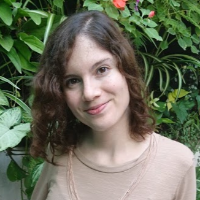Motivation: Sleep scoring it a common method used by experts to monitor the quantity and quality of sleep in people. But it is a time-consuming and labour-intense task. Because of this, automatic sleep scoring has been recently studied using machine learning techniques.
Materials and Methods: We present a Random Forest algorithm that uses discrete Wavelets [2] to extract features from each epoch and perform a classification into different Sleep Stages (S1, S2 and S3). Wavelets provide information about time as well as frequency domain. Only one channel (Fpz-Cz) was used, from the public data-set Sleep-EDF [1].
Results: After assessing the results with different alternatives of discrete wavelets, the discrete Mayer wavelet was chosen because it provided the best results. The classification produced an accuracy of 82% and a F-score of 60% over the test data.
Conclusion: We observed that wavelets are a good choice when identifying different sleep stages. The class that had the worst performance during classification was Stage 1. This might be due to the lower number of samples. A proper data balance might improve the previous results.
References:
[1] G. et al. Physiobank, physiotoolkit, and physionet: components of a newresearch resource for complex physiologic signals, 2000.
[2] M.-F. et al. Signal processing techniques applied to human sleep eeg sig-nals—a review. Biomedical Signal Processing and Control, 2014.
P#264
Wavelets for sleep scoring: A machine learning approach
Eugenia Moris
- Tandil,
- Argentina
- Eugenia Moris ¹
- , Cecilia Forcato ²
- , Ignacio Larrabide ¹
- 1 PLADEMA, UNICEN-CONICET
- 2 Laboratorio de Sueño y Memoria, Depto. de Ciencias de la Vida, Instituto Tecnológico de Buenos Aires (ITBA)

